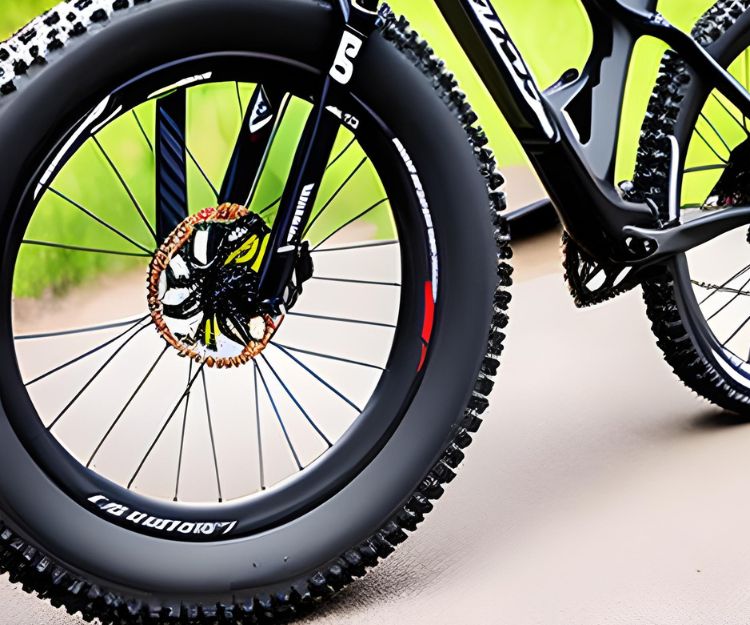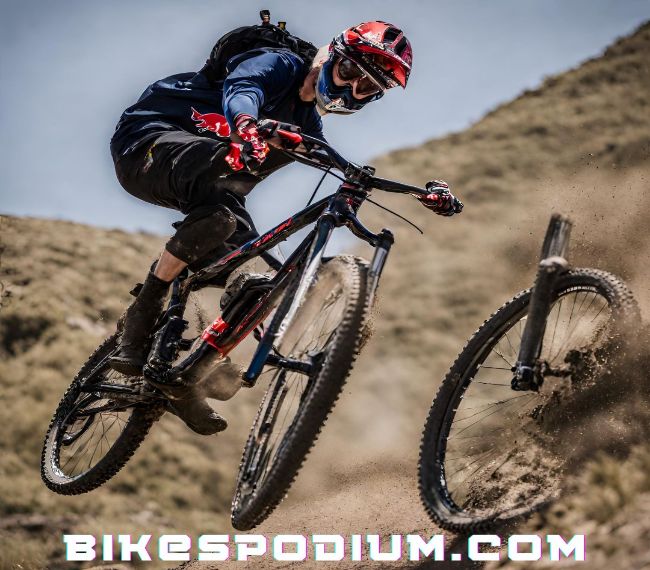
Mountain biking is an exhilarating sport that allows enthusiasts to explore rugged terrains and experience the thrill of riding through natural environments. As with any sporting activity, the condition of your equipment plays a crucial role in ensuring a safe and enjoyable ride. One essential component that requires attention and periodic replacement is your mountain bike (MTB) tires. In this article, we will discuss when it’s time to replace your MTB tires, providing you with the necessary knowledge to make informed decisions about your bike’s maintenance.
Signs of Wear and Tear
Tires are exposed to various elements during mountain biking, including rough surfaces, sharp rocks, and intense weather conditions. Over time, these factors contribute to tire wear and tear. Here are some signs that indicate it may be time to replace your MTB tires:
1. Tread Depth
The tread depth of your MTB tires is crucial for maintaining traction and control on different terrains. As you ride, the tread gradually wears down, resulting in reduced grip. To determine if your tires need replacement, inspect the tread depth. A general rule of thumb is that if the tread is worn down to 2mm or less, it’s time to invest in new tires.
Having sufficient tread depth is important for several reasons:
- Tread depth helps channel water and mud away from the tire, preventing hydroplaning and maintaining traction.
- Deeper tread provides better grip on loose or slippery surfaces, improving control and preventing accidents.
- Worn-out tread can lead to increased rolling resistance, making it harder to pedal and reducing overall efficiency.
Regularly checking the tread depth is essential to ensure optimal performance and safety on the trails.
2. Visible Damage
Inspect your MTB tires for any visible signs of damage such as cuts, punctures, or bulges. These imperfections can compromise the tire’s integrity, leading to increased chances of flats or blowouts. If you notice such damage, it’s best to replace the tires promptly to avoid potential accidents on the trails.
Common types of visible damage include:
- Cuts and punctures: These can weaken the tire structure and increase the risk of flats.
- Bulges and blisters: These indicate internal damage and can lead to sudden tire failure.
- Tears or cracks in the sidewall: These weaken the tire and can lead to blowouts.
Regularly inspecting your tires for visible damage is crucial for your safety and the longevity of your MTB tires.
3. Sidewall Wear
The sidewalls of your MTB tires are prone to wear, especially when riding on rough and rocky terrains. Examine the sidewalls for any cracks, tears, or abrasions. Damaged sidewalls can weaken the tire’s structure and increase the risk of blowouts. If you notice significant sidewall wear, it’s advisable to replace the tires to ensure your safety while riding.
Factors that contribute to sidewall wear include:
- Riding on rocky or abrasive surfaces: These can cause friction and abrasion on the sidewalls.
- Overinflating the tires: Excessive pressure can strain the sidewalls, leading to wear and tear.
- Aging and degradation of rubber compounds: Over time, the rubber in tires can become brittle and prone to cracking.
Regularly checking the sidewalls for wear and addressing any issues promptly will help extend the lifespan of your MTB tires.
4. Bulging or Dented Tires
Bulges or dents on the surface of your MTB tires indicate internal damage, which can compromise their performance and safety. These deformations are often caused by impacts with sharp objects or excessive pressure. If you notice any bulging or dents, it’s essential to replace the tires immediately to prevent a potential blowout during your rides.
Here’s why bulging or dented tires should be replaced:
- Bulges indicate weak spots in the tire’s structure, making it susceptible to sudden failure.
- Dents can affect the tire’s ability to maintain proper shape, affecting performance and stability.
- Internal damage can be difficult to assess visually, so it’s best to err on the side of caution and replace the tire.
Regularly inspecting your tires for any irregularities in shape or surface will help ensure your safety on the trails.
5. Age of the Tires
Even if your MTB tires appear to be in good condition, it’s important to consider their age. Over time, the rubber compounds in tires degrade, resulting in reduced performance and reliability. Some manufacturers recommend replacing tires every 3-5 years, regardless of visible wear. Therefore, if your tires are older than the suggested timeframe, it’s advisable to replace them to ensure optimal performance, especially if you frequently engage in intense or competitive riding.
Factors that contribute to the aging of tires include:
- Exposure to UV rays: Prolonged exposure to sunlight can cause the rubber to deteriorate.
- Storage conditions: Tires stored in extreme temperatures or humid environments can degrade faster.
- Frequency of use: Tires that are frequently used may experience more wear and degradation.
Considering the age of your tires is crucial for maintaining the performance and safety of your MTB.
Factors Influencing Tire Lifespan
While the signs mentioned above can help you determine when to replace your MTB tires, it’s important to consider several factors that may influence their lifespan:
1. Riding Style and Frequency
Your riding style and frequency directly impact the wear and tear your MTB tires endure. If you frequently ride on aggressive trails, tackle technical descents, or participate in competitive events, your tires will experience more stress compared to casual riders. Likewise, the frequency of your rides also affects the lifespan of your tires. Regular riders may need to replace their tires more often than occasional riders due to increased mileage.
Factors to consider regarding riding style and frequency:
- Aggressive riding: Jumping, cornering, and braking aggressively can accelerate tire wear.
- Technical descents: Riding on rocky or challenging terrains puts more strain on the tires.
- Competitive events: Pushing your limits in races or competitions can wear out tires faster.
- Mileage: The more you ride, the faster your tires will wear out.
Understanding your riding habits and adjusting your tire replacement schedule accordingly will help maintain optimal performance and safety.
2. Terrain and Weather Conditions
The terrain and weather conditions you frequently encounter during your mountain biking adventures also affect tire lifespan. Riding on rocky trails or abrasive surfaces accelerates tire wear. Similarly, exposure to extreme weather conditions, such as prolonged exposure to UV rays or riding in excessively hot or cold temperatures, can deteriorate the tire’s rubber compounds, reducing their lifespan.
Consider the following factors related to terrain and weather conditions:
- Trail conditions: Rough, rocky, or abrasive trails can cause faster tire wear.
- Soil composition: Certain types of soil, like clay or sand, can be more abrasive to tires.
- Weather extremes: Extreme heat or cold can affect the tire’s rubber compounds.
- Wet or muddy conditions: Riding in wet or muddy terrain can accelerate tire wear.
Adapting your tire choice and maintenance routine based on the specific terrain and weather conditions you encounter will help maximize their lifespan.
3. Tire Pressure and Maintenance
Proper tire pressure is crucial for optimal performance and longevity. Overinflated or underinflated tires can cause uneven wear patterns, reducing their lifespan. Regular maintenance, such as cleaning and inspecting your tires, can also help identify potential issues early on, allowing for timely replacement or repairs.
Consider the following points regarding tire pressure and maintenance:
- Recommended tire pressure: Refer to the manufacturer’s guidelines for the recommended tire pressure range.
- Use a pressure gauge: Regularly check and adjust tire pressure to ensure it falls within the recommended range.
- Inspect for debris: Clean your tires regularly and remove any debris that may have lodged in the treads.
- Check for wear and damage: Regularly inspect your tires for signs of wear, visible damage, or irregularities.
Proper tire pressure and regular maintenance practices will help prolong the lifespan of your MTB tires and ensure optimal performance.
Conclusion
Knowing when to replace your MTB tires is essential for maintaining a safe and enjoyable riding experience. By regularly inspecting your tires for signs of wear and tear, such as tread depth, visible damage, sidewall wear, bulges, and dents, you can ensure your tires are in optimal condition. Additionally, considering factors like riding style, terrain and weather conditions, as well as proper tire pressure and maintenance, will help you determine when it’s time to invest in new MTB tires. Remember, prioritizing your safety and the reliability of your equipment is paramount in the world of mountain biking. Happy riding!
Note: This article has been generated using natural language processing technology and may not entirely reflect the views or expertise of a human SEO content writing expert.
Complete Article:
When to Replace MTB Tires
Mountain biking is an exhilarating sport that allows enthusiasts to explore rugged terrains and experience the thrill of riding through natural environments. As with any sporting activity, the condition of your equipment plays a crucial role in ensuring a safe and enjoyable ride. One essential component that requires attention and periodic replacement is your mountain bike (MTB) tires. In this article, we will discuss when it’s time to replace your MTB tires, providing you with the necessary knowledge to make informed decisions about your bike’s maintenance.
Signs of Wear and Tear
Tires are exposed to various elements during mountain biking, including rough surfaces, sharp rocks, and intense weather conditions. Over time, these factors contribute to tire wear and tear. Here are some signs that indicate it may be time to replace your MTB tires:
1. Tread Depth
The tread depth of your MTB tires is crucial for maintaining traction and control on different terrains. As you ride, the tread gradually wears down, resulting in reduced grip. To determine if your tires need replacement, inspect the tread depth. A general rule of thumb is that if the tread is worn down to 2mm or less, it’s time to invest in new tires.
Having sufficient tread depth is important for several reasons:
- Tread depth helps channel water and mud away from the tire, preventing hydroplaning and maintaining traction.
- Deeper tread provides better grip on loose or slippery surfaces, improving control and preventing accidents.
- Worn-out tread can lead to increased rolling resistance, making it harder to pedal and reducing overall efficiency.
Regularly checking the tread depth is essential to ensure optimal performance and safety on the trails.
2. Visible Damage
Inspect your MTB tires for any visible signs of damage such as cuts, punctures, or bulges. These imperfections can compromise the tire’s integrity, leading to increased chances of flats or blowouts. If you notice such damage, it’s best to replace the tires promptly to avoid potential accidents on the trails.
Common types of visible damage include:
- Cuts and punctures: These can weaken the tire structure and increase the risk of flats.
- Bulges and blisters: These indicate internal damage and can lead to sudden tire failure.
- Tears or cracks in the sidewall: These weaken the tire and can lead to blowouts.
Regularly inspecting your tires for visible damage is crucial for your safety and the longevity of your MTB tires.
3. Sidewall Wear
The sidewalls of your MTB tires are prone to wear, especially when riding on rough and rocky terrains. Examine the sidewalls for any cracks, tears, or abrasions. Damaged sidewalls can weaken the tire’s structure and increase the risk of blowouts. If you notice significant sidewall wear, it’s advisable to replace the tires to ensure your safety while riding.
Factors that contribute to sidewall wear include:
- Riding on rocky or abrasive surfaces: These can cause friction and abrasion on the sidewalls.
- Overinflating the tires: Excessive pressure can strain the sidewalls, leading to wear and tear.
- Aging and degradation of rubber compounds: Over time, the rubber in tires can become brittle and prone to cracking.
Regularly checking the sidewalls for wear and addressing any issues promptly will help extend the lifespan of your MTB tires.
4. Bulging or Dented Tires
Bulges or dents on the surface of your MTB tires indicate internal damage, which can compromise their performance and safety. These deformations are often caused by impacts with sharp objects or excessive pressure. If you notice any bulging or dents, it’s essential to replace the tires immediately to prevent a potential blowout during your rides.
Here’s why bulging or dented tires should be replaced:
- Bulges indicate weak spots in the tire’s structure, making it susceptible to sudden failure.
- Dents can affect the tire’s ability to maintain proper shape, affecting performance and stability.
- Internal damage can be difficult to assess visually, so it’s best to err on the side of caution and replace the tire.
Regularly inspecting your tires for any irregularities in shape or surface will help ensure your safety on the trails.
5. Age of the Tires
Even if your MTB tires appear to be in good condition, it’s important to consider their age. Over time, the rubber compounds in tires degrade, resulting in reduced performance and reliability. Some manufacturers recommend replacing tires every 3-5 years, regardless of visible wear. Therefore, if your tires are older than the suggested timeframe, it’s advisable to replace them to ensure optimal performance, especially if you frequently engage in intense or competitive riding.
Factors that contribute to the aging of tires include:
- Exposure to UV rays: Prolonged exposure to sunlight can cause the rubber to deteriorate.
- Storage conditions: Tires stored in extreme temperatures or humid environments can degrade faster.
- Frequency of use: Tires that are frequently used may experience more wear and degradation.
Considering the age of your tires is crucial for maintaining the performance and safety of your MTB.
Factors Influencing Tire Lifespan
While the signs mentioned above can help you determine when to replace your MTB tires, it’s important to consider several factors that may influence their lifespan:
1. Riding Style and Frequency
Your riding style and frequency directly impact
the wear and tear your MTB tires endure. If you frequently ride on aggressive trails, tackle technical descents, or participate in competitive events, your tires will experience more stress compared to casual riders. Likewise, the frequency of your rides also affects the lifespan of your tires. Regular riders may need to replace their tires more often than occasional riders due to increased mileage.
Factors to consider regarding riding style and frequency:
- Aggressive riding: Jumping, cornering, and braking aggressively can accelerate tire wear.
- Technical descents: Riding on rocky or challenging terrains puts more strain on the tires.
- Competitive events: Pushing your limits in races or competitions can wear out tires faster.
- Mileage: The more you ride, the faster your tires will wear out.
Understanding your riding habits and adjusting your tire replacement schedule accordingly will help maintain optimal performance and safety.
2. Terrain and Weather Conditions
The terrain and weather conditions you frequently encounter during your mountain biking adventures also affect tire lifespan. Riding on rocky trails or abrasive surfaces accelerates tire wear. Similarly, exposure to extreme weather conditions, such as prolonged exposure to UV rays or riding in excessively hot or cold temperatures, can deteriorate the tire’s rubber compounds, reducing their lifespan.
Consider the following factors related to terrain and weather conditions:
- Trail conditions: Rough, rocky, or abrasive trails can cause faster tire wear.
- Soil composition: Certain types of soil, like clay or sand, can be more abrasive to tires.
- Weather extremes: Extreme heat or cold can affect the tire’s rubber compounds.
- Wet or muddy conditions: Riding in wet or muddy terrain can accelerate tire wear.
Adapting your tire choice and maintenance routine based on the specific terrain and weather conditions you encounter will help maximize their lifespan.
3. Tire Pressure and Maintenance
Proper tire pressure is crucial for optimal performance and longevity. Overinflated or underinflated tires can cause uneven wear patterns, reducing their lifespan. Regular maintenance, such as cleaning and inspecting your tires, can also help identify potential issues early on, allowing for timely replacement or repairs.
Consider the following points regarding tire pressure and maintenance:
- Recommended tire pressure: Refer to the manufacturer’s guidelines for the recommended tire pressure range.
- Use a pressure gauge: Regularly check and adjust tire pressure to ensure it falls within the recommended range.
- Inspect for debris: Clean your tires regularly and remove any debris that may have lodged in the treads.
- Check for wear and damage: Regularly inspect your tires for signs of wear, visible damage, or irregularities.
Proper tire pressure and regular maintenance practices will help prolong the lifespan of your MTB tires and ensure optimal performance.
Conclusion
Knowing when to replace your MTB tires is essential for maintaining a safe and enjoyable riding experience. By regularly inspecting your tires for signs of wear and tear, such as tread depth, visible damage, sidewall wear, bulges, and dents, you can ensure your tires are in optimal condition. Additionally, considering factors like riding style, terrain and weather conditions, as well as proper tire pressure and maintenance, will help you determine when it’s time to invest in new MTB tires. Remember, prioritizing your safety and the reliability of your equipment is paramount in the world of mountain biking. Happy riding!



